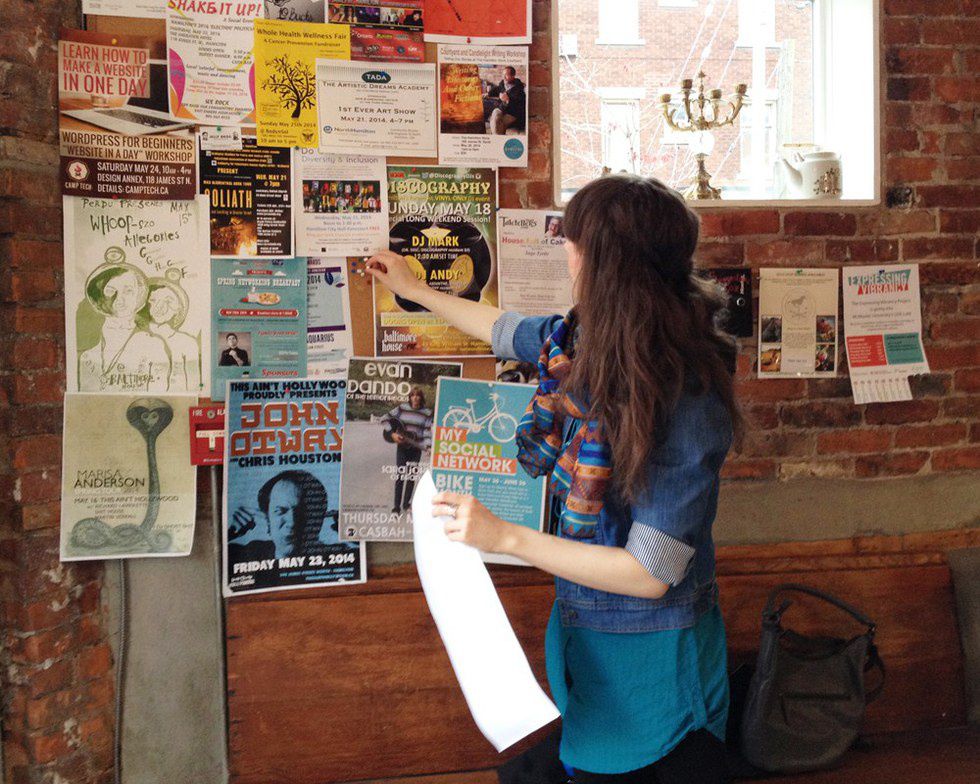The Pfeiffer University Falcons Athletics program has confirmed that it will move to NCAA Division III competition in the USA South Conference beginning in 2017. What does this mean for the school, students, and athletes? One thing is for sure: anytime you move divisions, whether up or down, there will also be ups and downs in the transitional period. In my last piece, I looked at why I think the school made the move down the ladder to D3, so now let's see what everyone can expect in the coming years, both good and bad.
Pros:
1. More opportunities for local athletes.
To get us started right, let's take a peek at some of the positives. I believe this move will create more opportunities for local athletes with athletic scholarships no longer in play to compete for. Kids that perform well on a local level, but may not have the talent to move up in the ranks, now have an outlet to call home in Misenheimer. I hope Pfeiffer's recruiting strategies turn in this direction, with major cities like Raleigh, Greensboro and Charlotte all less than two hours away.
2. A fresh start for struggling teams.
We all know certain teams become the forefront of their respective athletic programs based on the level of importance that the athletic department and athletic director places on them. In Pfeiffer's case, these have traditionally been soccer and lacrosse. Men's soccer, led by Coach (and Athletic Director, ironically enough) Bob Reasso, are coming off a historic year capped with the NCAA Championship. Although that is wonderful in its own right, you have teams like cross country, golf, tennis and women's basketball that can now have fresh starts at the D3 level. Most teams at Pfeiffer were very successful in the past couple years, which makes this move slightly puzzling to some.
3. The Increased balance between athletics and academics.
As stated in Part one of this series, the move now can balance the philosophy of athletics and academics. Although dedication is still high at the Division III level, it is a less stringent athletic schedule based on practices, required workouts, etc. This allows the student-athletes more opportunities to broaden their horizons as students and community members with the likes of student clubs, leadership positions or on-campus jobs for extra financial aid. According to the NCAA, Division III schools also have the highest graduation rate among all its divisions.
4. Job security for coaches.
I believe this move gives all current coaches if they choose to stay, a warm and comfy security blanket. With changes in rules, recruiting and potential turnover, coaches can afford to have a couple bad years if they decided to keep their roots in Misenheimer.
5. Expansion of programs or facilities.
With less money going to player scholarships, it frees up some funds for some upgrades around campus. In the past three years, there have been significant upgrades in lighting, marketing/logo accessories and other improvements across the athletic department. These were much needed to enhance the experience of the fans and athletes as well as level the playing field in facilities quality at its current playing level. There is always room for more improvement. There is even talk of adding land and a brand new football facility in the coming years. Here's another novel concept: add new and unique academic program offerings to aid in recruiting and overall enrollment.
Bonus: Honoring athletic-based scholarships for existing players.
This may be NCAA rule but it is great nonetheless. Not only will this help retain current players, but it sends a message of good faith to potential players as well. If a school keeps its word, that's a school you can trust.
Cons:
1. The Initial lack of post-season eligibility.
For the next two years, no teams will be eligible for post-season play. This is discouraging to current athletes who may not have tasted the victory of a conference championship or NCAA Tournament berth. It may also ward off potential recruits with their eyes on a ring or trophy as soon as they arrive. To recruits, perception could feel as if half your career is wasted.
2. Enrollment turnover.
Much like death and taxes, this one is inevitable when you make a change of this magnitude. With the student body being compromised of around 60 percent athletes, this will be a major hit on the university initially based on the fact that the more elite-level athletes will be looking for new homes at the DII level or potentially move to greener pastures in Division I. Recruiting numbers will also most likely decrease in the first couple years based on the other "cons" on this list. It will take some time to rebuild the athletic program and the student body in general.
3. Teams will struggle for several years.
With the potential mass exodus listed in No. 2, you will find teams struggling in the first few years in their new home of the USA South. It is a highly competitive conference that I actually had the privilege of playing in as a first-year collegiate athlete. As Division III becomes the new norm for the Falcons, you will find teams rebounding to a competitive level with the potential for championships within the first five years or so.
4. Increased travel.
Unfortunately for the athletes (and professors dealing with missed classes), there are fewer DIII schools in the area, meaning increased travel for nearly every team. Instead of having an average drive time of 2-3 hours, most teams will now travel upwards of 4-6 hours just to play a conference game or match. With this comes increased travel and lodging costs for the athletic program.
5. Alumni and Booster push back.
I currently work at a prestigious country club as a tennis operations manager. I say that to say this: There are many members of this country club that either has educational or financial ties to the university. I have spoken first-hand to alumni and boosters that were disgruntled and, quite frankly, disappointed with the move. More so, the university kept it somewhat quiet from some of the lower-level "Falcon club" members -- some of whom didn't find out about the move until after I told them the day that the school released its statement announcing the move. This could have been handled a bit more seamlessly to ensure the support of current donors and to entice more support for the university as a whole.
It will we fun and interesting to see how this transition unfolds over the coming years. The school has my support, although I question the potential reasons behind the move to Division III. Like all other alumni and supporters, I will be forced to see this through, and I hope more positives than negatives come from the move. I wish the absolute best for the athletic program and university for years to come. Go Falcons!






 Energetic dance performance under the spotlight.
Energetic dance performance under the spotlight. Taylor Swift in a purple coat, captivating the crowd on stage.
Taylor Swift in a purple coat, captivating the crowd on stage. Taylor Swift shines on stage in a sparkling outfit and boots.
Taylor Swift shines on stage in a sparkling outfit and boots. Taylor Swift and Phoebe Bridgers sharing a joyful duet on stage.
Taylor Swift and Phoebe Bridgers sharing a joyful duet on stage.













